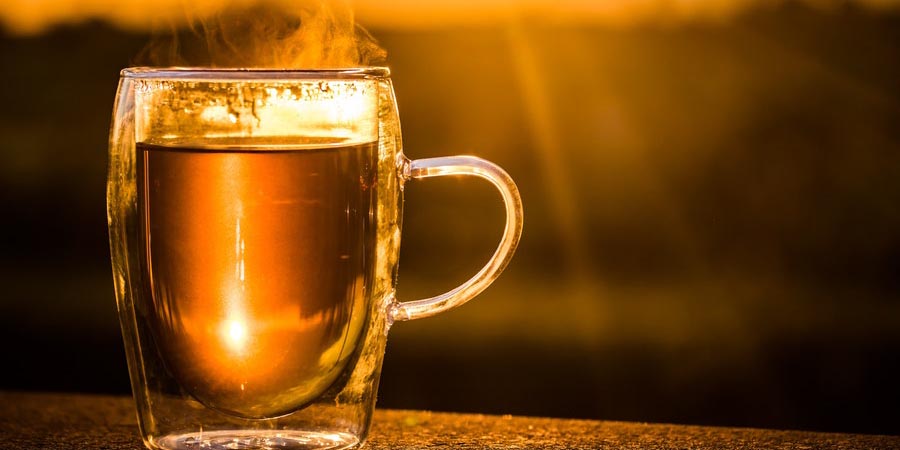Add description, images, menus and links to your mega menu
A column with no settings can be used as a spacer
Link to your collections, sales and even external links
Add up to five columns
Add description, images, menus and links to your mega menu
A column with no settings can be used as a spacer
Link to your collections, sales and even external links
Add up to five columns

Healthy Herbal Teas and Tisane Recipe
April 07, 2018 3 min read
Healthy Herbal Teas and Tisane Recipe
Herbal Teas: Healthy Herbal Teas and Tisane Recipe
What is a Tisane?
While the term "tisane" may be unfamiliar to some, many have enjoyed tisanes at some point. A tisane is simply a tea made from something other than tea leaves. True tea comes from the Camellia Sinensis plant and includes white tea, green tea, black tea, and oolong tea. However, herbal teas, floral teas, and fruit teas are considered tisanes. These tisanes are often chosen for their flavor variety or to avoid the caffeine in tea leaves, and many herbs have beneficial properties that are best absorbed in tea form. So, certain herbal teas can indeed be good for you.
How are Tisanes Characterized?
Tisanes are usually categorized by the part of the plant used. The major categories of herbal tea types include:
- Leaf Tisanes: Lemon balm, mint, lemongrass, and French verbena
- Flower Tisanes: Rose, chamomile, hibiscus, and lavender
- Bark Tisanes: Cinnamon, slippery elm, and black cherry bark
- Root Tisanes: Ginger, echinacea, and chicory
- Fruit and Berry Tisanes: Raspberry, blueberry, peach, and apple
- Seed and Spice Tisanes: Cardamom, caraway, and fennel
Where Do Herbal Tisanes Come From?
Herbal teas or tisanes can be made from a blend of plant types or multiple parts of the same plant. These blends are combined with hot water or boiling water. Tisanes can also be made from moss, stems, or other plant matter. Some tisanes are classified as medicinal due to their high content of antioxidants and nutrients, while others are enjoyed simply for their taste. Detox teas are a popular category of medicinal tisanes
How to Brew Herbal Tisanes
Brewing times and proportions for herbal teas vary widely, from as short as two minutes to as long as 15 minutes. The amount of plant material used can range from a pinch to several tablespoons per cup of hot water. Packaging usually provides specific brewing instructions for each type.
Unlike true tea, which contains varying amounts of caffeine, herbal teas are often caffeine-free and can be formulated specifically for relaxation. Some tisanes, such as dandelion tea, act as effective herbal diuretics, while kava tea is used to relieve stress. Certain tisanes can also be cooled and used topically as astringents and disinfectants.
Fruit and Flower Tisanes
Tisanes offer a wide variety of flavors, from light and bitter to deep and earthy. Even medicinal herb teas can be enjoyed casually in weaker brews. Fruit tisanes are commonly made with blueberries, blackberries, raspberries, and apples, each providing the characteristic flavor of the fruit. Flower tisanes like chamomile are also popular, offering light, delicate flavors. Tisanes are often mixed with true tea to create unique flavor profiles. For example, chai tea combines black tea with a spice tisane.
Tisane Recipe
Makes about 4 cups: 4 servings
Ingredients:
- 2 stalks fresh lemongrass (about 12 inches), rinsed
- 2 lemon thyme or regular thyme sprigs (3 to 4 inches), rinsed
- 24 spearmint, peppermint, or mint sprigs (6 to 8 inches; use one kind or a combination), rinsed
- 4 slices (size of a quarter) fresh ginger, crushed
- 5 thin lemon or lime slices
- 1 bag (about 1 1/2 teaspoons) peppermint tea
Instructions:
- In a 2- to 3-quart pan over high heat, bring 4 cups of water to a boil.
- Meanwhile, trim off and discard tough ends of lemongrass and pull off coarse outer leaves. Thinly slice stalks.
- Add lemongrass, thyme, mint, ginger, lemon slices, and tea to boiling water. Cover and remove from heat. Let stand (steep) for 5 to 10 minutes.
- Pour the tisane liquid through a fine strainer into a teapot or pitcher. Serve hot, or cool with ice.
By ROFINA WILENCHIK, SAN ANSELMO, CALIFORNIA
5 Healthy Smoothie Recipes Made with Tea
Rooibos Tea: A Comprehensive Guide
Subscribe
Sign up to get the latest on sales, new releases and more …
